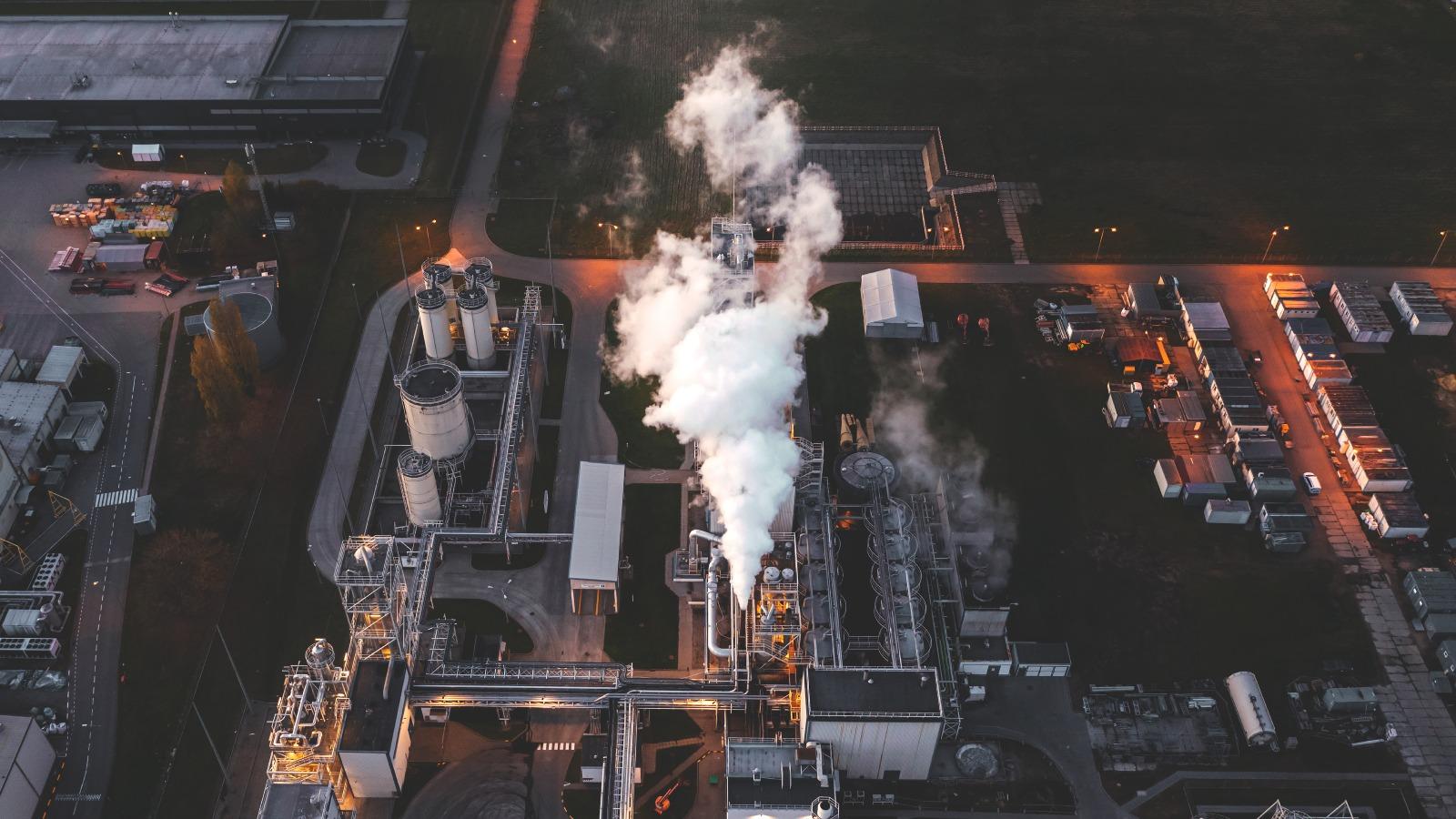As the world accelerates efforts to combat climate change, hydrogen (H₂), and carbon capture, utilization, and storage (CCUS) technologies have emerged as critical solutions for achieving net-zero emissions. While renewable energy sources play a key role in reducing emissions, hard-to-abate sectors—such as steel, cement, and heavy transportation—require complementary technologies to enable deep decarbonization. Hydrogen, particularly green and low-carbon hydrogen, offers a clean energy alternative, while CCUS captures and stores CO₂, preventing it from re-entering the atmosphere.
The synergy between H2 and CCUS is essential for industrial transformation, with blue hydrogen acting as a bridge technology while green hydrogen scales up. However, challenges remain, including high production costs, infrastructure limitations, and policy uncertainties. Continued research, technological advancements, and supportive policies will be necessary to drive cost reductions and improve feasibility of these technologies.
Investment and governance play a crucial role in accelerating adoption, with governments providing financial incentives and regulatory frameworks to encourage private-sector participation. Countries are pursuing distinct innovation strategies, while international collaborations are fostering knowledge-sharing and reducing technological risks. Expanding infrastructure—such as hydrogen transport networks and industrial CCUS clusters—will further support deployment at scale.
Ultimately, H2 and CCUS technologies will be pivotal in transforming energy-intensive industries and ensuring a sustainable, low-carbon future. By overcoming current barriers through innovation, collaboration, and investment, these technologies can drive the global transition to a cleaner and more resilient economy.

1 A Unified Overview of CCUS and Hydrogen Technologies
The 2015 Paris Agreement brought climate change to the forefront of the global agenda, driving governments to set net-zero targets and accelerate clean energy deployment. However, decarbonizing hard-to-abate industrial and transport sectors remains challenging due to technological and market-specific barriers. Achieving significant emission reductions in these sectors will require the combined use of CCUS and hydrogen. While hydrogen holds long-term potential, its immediate impact is limited without parallel advancements in CCUS and renewable energy infrastructure.
1.1 What is Carbon Capture / CCUS Technology?
CCUS technology consists of four phases: capturing CO₂ from industrial sources or the air, transporting it via pipelines or other means, storing it in geological formations, or utilizing it in industrial processes to reduce emissions. This integrated approach prevents CO₂ from re-entering the atmosphere while supporting sustainable production methods.
Among CCUS applications, industrial-point-source capture is the most immediately viable for reducing emissions in hard-to-abate sectors. Direct Air Capture (DAC), although still emerging, has potential when combined with hydrogen production and sustainable fuels. Bioenergy with Carbon Capture and Storage (BECCS) plays a growing role in net-zero strategies, mainly used in bioethanol production.
1.2 What is Hydrogen Technology?
Hydrogen, especially green and low-carbon hydrogen, is seen as vital for decarbonizing hard-to-abate industries like steel, cement, and aviation. Global hydrogen demand has tripled since 1975, with production projected to reach 614 million tons annually by 2050 to meet climate targets.
While hydrogen production for industrial purposes is widespread, most of the hydrogen production today is "grey," derived from fossil fuels and emitting significant CO₂. Green hydrogen offers substantial potential to replace grey hydrogen, particularly in sustainable fertilizer production and high-temperature industries like glass, steel, and cement production. However, transitioning to green hydrogen will require significant investment and financial incentives to offset the additional costs.
Despite challenges in adopting green hydrogen—such as market uncertainties, technical barriers, and political issues, especially in developing countries—the costs of low-emission hydrogen are expected to decrease as technology advances and deployment scales up. As technology progresses and larger-scale production reduces costs, green hydrogen can become more competitive with fossil-based alternatives over time.
1.3 How can H₂ and CCUS Technologies be combined?
Hydrogen and CCUS are complementary technologies that play a crucial role in decarbonizing hard-to-electrify sectors, providing a dual pathway for emission reductions and industrial transformation. The synergy between these technologies is at the core of emerging CCUS hubs, where blue hydrogen production is central. Blue hydrogen, produced from natural gas through steam methane reforming (SMR), generates CO₂, but carbon capture technology captures these emissions, preventing them from entering the atmosphere.
To further enhance decarbonization, hybrid solutions that combine renewable energy with hydrogen are increasingly being explored. These solutions optimize costs, scale production, and significantly reduce emissions. Although CCUS remains costly, it is essential for addressing climate change by securely storing or repurposing CO₂. This integrated approach, when combined with hybrid solutions, can reduce greenhouse gas emissions by over 80% compared to natural gas without carbon capture.
2 Evaluating CCUS and Hydrogen Technologies Across Hard-to-Abate Industries
Hydrogen and CCUS technologies are crucial for decarbonizing hard-to-abate industries such as steel, cement, aluminum, petrochemicals, heavy transport and aviation. Green hydrogen offers a solution by providing high-grade heat fuel and serving as a key feedstock. Integrating CCUS with hydrogen, particularly blue hydrogen, can capture CO₂ during production, storing or repurposing it, thus enhancing significant emissions reductions.
Hydrogen’s primary benefit lies in its potential to decarbonize hard-to-electrify sectors and serve as a clean fuel and feedstock. However, its major bottleneck is the high cost of production, limited infrastructure, and the energy intensity of electrolysis.
In contrast, CCUS excels in directly capturing and storing CO₂, making it an effective tool for decarbonizing fossil fuel-based hydrogen production. Yet, its challenges include the high cost of capture and storage infrastructure, as well as the limited availability of suitable storage sites.
This chapter provides a sectoral analysis of hydrogen and CCUS in 6 hard-to-abate industries, focusing on their roles in decarbonization. The table below outlines the advantages and challenges of both technologies, offering insights into their capabilities and synergies. Ultimately, this analysis aims to help stakeholders understand how these technologies can complement each other, driving the adoption of low-carbon hydrogen and accelerating the transition to a sustainable industrial future.

3 Future Outlook: Technological Trends, Costs, and Adoption Potential
3.1. Hydrogen and CCUS Cost Reductions
The transition to a low-carbon economy relies on advancements in hydrogen (H₂) and carbon capture, utilization, and storage (CCUS) technologies, especially for hard-to-abate sectors like heavy industry and energy.
For green hydrogen, cost reductions are driven by improved electrolyzer technology, scaling up production, and optimizing system designs. Increasing plant sizes from 1 MW to 20 MW could lower costs by over 30%, with further reductions expected as economies of scale and automation improve efficiency. However, challenges like material shortages and efficiency losses at low power loads remain significant. Learning rates of 16-21% indicate continued cost declines as production scales up. For blue hydrogen, integrating carbon capture into gas reforming processes can lower production costs. Captured CO₂ can either be stored or repurposed, making blue hydrogen a cost-effective short-term solution. The transition to green hydrogen will depend on technological advancements and the availability of natural gas.
On the other hand, CCUS is vital for decarbonizing industries that cannot easily switch to alternative technologies. The International Energy Agency (IEA) estimates CCUS could prevent up to 8 billion tonnes of CO₂ emissions annually by 2050—about 25% of today’s energy-sector emissions. However, costs remain a challenge, ranging from $15-25 per tonne for concentrated CO₂ sources to $40-120 per tonne for more diluted emissions. Direct air capture is the most expensive but remains crucial for long-term carbon removal. Unlike renewables, CCUS has not experienced significant cost declines, posing a major barrier to widespread adoption.
3.2 Technology Adoption
Both hydrogen and CCUS technologies span a wide range of Technology Readiness Levels (TRLs), from early-stage feasibility studies to commercial deployment. Government investment is crucial to funding research, infrastructure, and pilot projects to accelerate commercialization and lower costs.
For CCUS, storage safety and long-term effectiveness remain key uncertainties, and the scale of each project limits cost reductions. Technologies range from early research (TRL 1-3) to fully operational systems (TRL 8-9), with pilot projects (TRL 6-7) currently demonstrating real-world feasibility.
For hydrogen, both green and blue technologies are advancing, with increasing commercial deployment expected as they reach higher TRLs. The long-term shift from blue to green hydrogen will be guided by supply chain factors, cost reductions, and sector-specific requirements.
Despite ongoing challenges, hydrogen and CCUS will play a central role in the global transition to a low-carbon economy. Their continued development, supported by policy and investment, is essential to achieving long-term decarbonization goals.
4 Accelerating Adoption of CCUS and Hydrogen
4.1. Invesments and Governance
The large-scale adoption of CCUS and hydrogen technologies faces several challenges, including evolving policy frameworks, high initial costs, and uncertain revenue streams. Although CCUS technology is well-understood, its commercial scalability remains unproven. Clear and consistent policies—including incentives, regulatory approvals, and risk management—are necessary to encourage investment. However, the lack of comprehensive policy alignment across nations complicates global deployment efforts.
Government financial support is critical for overcoming cost barriers, with countries like the U.S., China, Japan, Canada, and the Netherlands advocating for a diverse technology mix, including fossil fuel-based hydrogen combined with CCUS. However, these strategies often fail to fully assess real-world emissions impacts, potentially reducing the effectiveness of carbon capture. Additionally, hydrogen importers like Japan and South Korea lack strong incentives to demand low-emission hydrogen, as emissions are typically counted in exporting nations.
Attracting private investment remains a key hurdle due to the absence of established revenue models for CCUS projects. Many initiatives rely on government funding, yet large-scale deployment requires significant private-sector participation. Public perception also plays a role, as CCUS is often viewed as a means of prolonging fossil fuel use, leading to public resistance and funding challenges. Stronger international collaboration, standardized regulations, and clear carbon accounting systems are needed to drive adoption.
4.2 Research and Development
Innovation in hydrogen storage, production, and infrastructure is essential for reducing costs and improving efficiency. Green hydrogen, despite its environmental benefits, remains expensive and technically challenging due to low energy density and high flammability. Researchers are exploring compressed gas, liquid hydrogen, and advanced materials like metal-organic frameworks (MOFs) to improve storage efficiency and cost-effectiveness. In addition, CCUS research focuses on reducing CO₂ capture costs and improving integration into industrial processes, particularly in hard-to-abate industries like steel and cement.
Different countries are adopting unique innovation strategies to advance these technologies. China is leading efforts in green hydrogen electrolysis and fuel cell advancements, while the U.S. is prioritizing research in advanced storage and electrolysis solutions through significant R&D investments. The EU is working to integrate electrolysis with renewable energy sources, and Japan is emphasizing hydrogen storage and carbon recycling technologies. Additionally, international collaborations, such as Mission Innovation and IEA-led initiatives, are playing a crucial role in fostering shared knowledge and reducing technological risks, accelerating the transition to a low-carbon economy.
4.3 Infrastructure and Collaboration
Scaling CCUS requires leveraging geological storage sites and creating industrial CCUS clusters, where multiple emission-intensive facilities share a common CO₂ transport and storage network. These hubs enhance efficiency and reduce costs. However, high initial infrastructure costs pose a challenge, necessitating long-term, low-cost financing from governments and international clean energy funds.
For hydrogen deployment, repurposing existing natural gas pipelines presents a cost-effective solution for transport. Countries like the Netherlands and Germany are pioneering large-scale hydrogen backbone projects, aiming to integrate hydrogen into industrial and transport sectors.
Despite promising developments, regulatory uncertainties remain a significant barrier to hydrogen infrastructure growth. Stronger financial policies and government support will be necessary to ensure cost recovery and enable widespread adoption.
5 Concluding Remarks
The transition to a low-carbon economy relies on the widespread adoption of hydrogen and CCUS technologies, particularly in hard-to-decarbonize sectors like heavy industry and transportation. These technologies are essential for achieving net-zero emissions, enhancing energy security, and driving sustainable economic growth.
Early investment in these sectors offers a strategic advantage as global demand for clean energy and carbon management solutions continues to rise. Governments can play a crucial role in facilitating this transition through policy support, financial incentives, and regulatory frameworks that attract private investment and accelerate technological development.
Key trends shaping the future include ongoing cost reductions, infrastructure expansion, and evolving policy frameworks. While challenges such as high production costs and infrastructure limitations persist, continued innovation, policy support, and global collaboration will drive solutions. The convergence of green hydrogen, scalable CCUS, and supportive regulations could enable the decarbonization of hard-to-abate sectors, ensuring a sustainable and economically viable path to net-zero emissions.
CCUS and H2 in Hard to Abate Industries
Contact us











